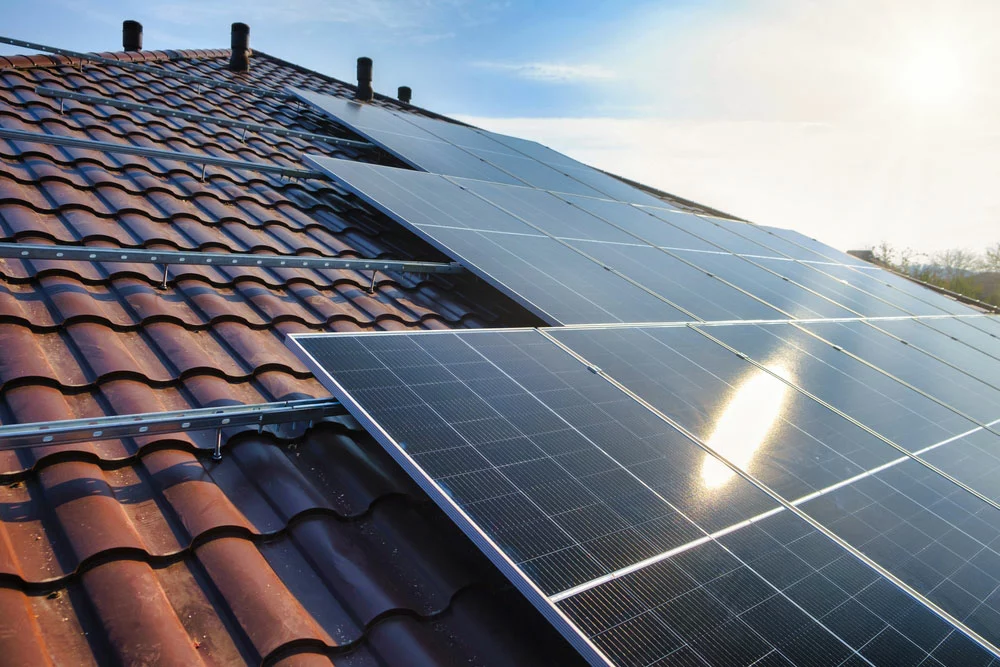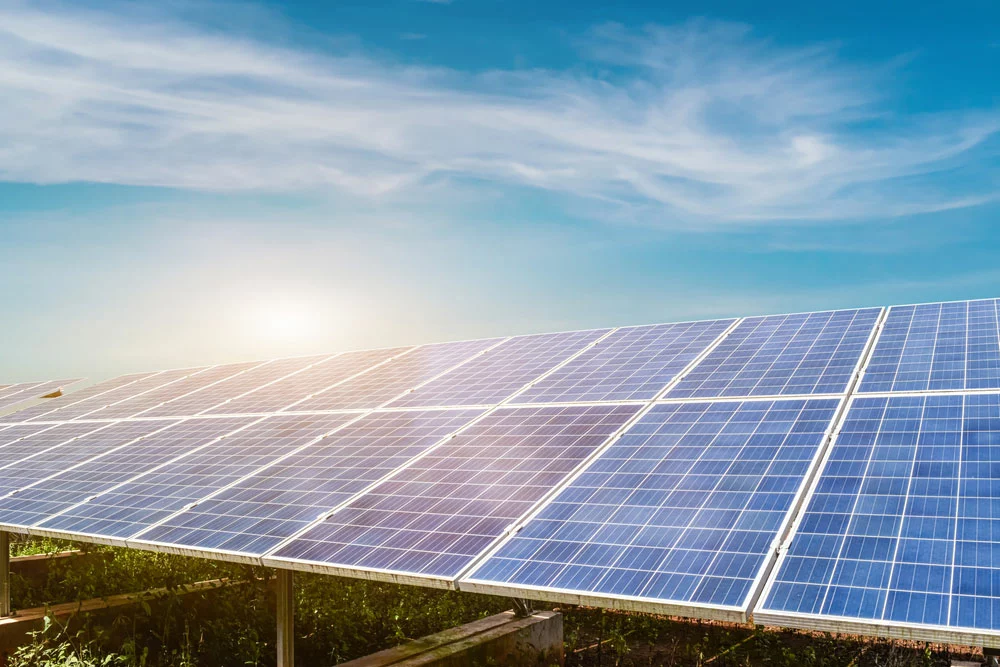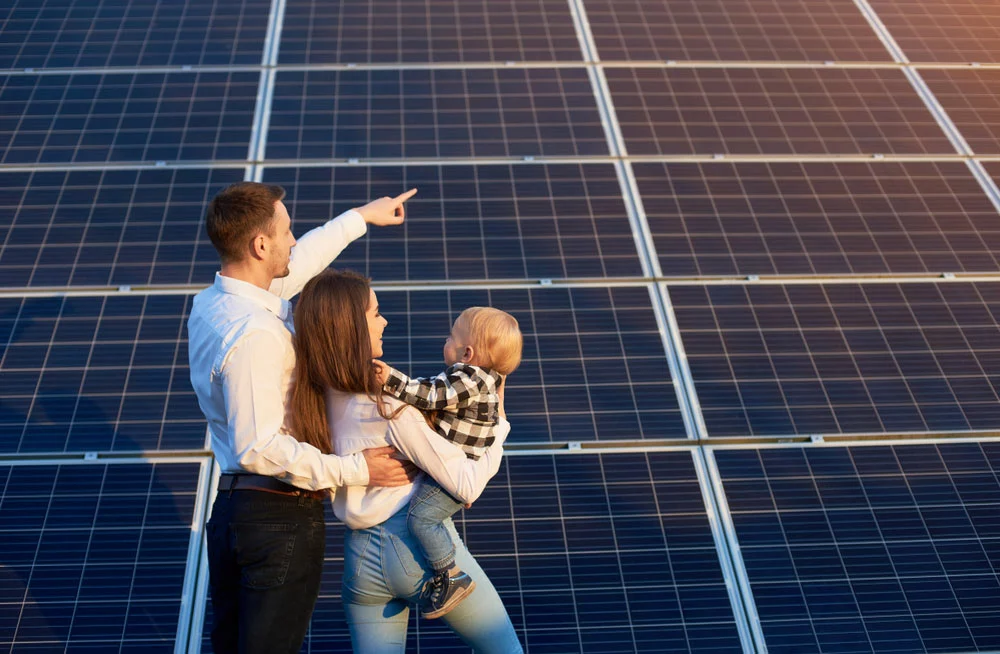Solar panels use solar cells that trap and transform sunlight into electricity. A single solar cell can only harness a few watts of power, but you may not realize that 60-cell solar panels and 72-cell models contain many of these solar cells.
The number of cells on the solar panel determines how much electricity it will generate over a specified period. This article will compare and contrast the 60-cell and 72-cell solar panels to help you make an informed purchasing decision.
60-cell vs. 72-cell solar panels

Solar panels are Mounted on the house.
Both solar cell panels are great options for residential and commercial solar systems, but some key differences will affect your installation costs and energy production.
Dimensions
The dimensions of a 60 cell panel are 4.6′ x 16′ (1.4 m x 4.8 m), while for a 72 cell panel are 5′ x 18′ (1.5 m x 5.5 m).
Dimensions are critical when figuring out how much space you have for solar panels in your yard or roof. Or how much room you need for an array in your RV.
Cost
In general, 60-cell solar panels cost less than 72-cell panels. The cost per watt of power these two types of panels generate is relatively the same. But because 60-cell panels are smaller, they’re typically cheaper per watt than 72-cell panels.
Weight
The 60-cell panels are about 1.5 pounds lighter than the 72-cell panels. This may not seem like a lot, but it adds up when you’re trying to mount a large panel on your roof. The total weight difference is about 11 pounds, which can be significant if you have a lot of panels on your roof and need to carry them around during installation.
Purpose
The 72-cell panels will generate more power in ideal conditions, but they’re also more expensive and can’t capture as much energy from low-angle sunshine as the 60-cell models.
If your home is mostly cloudy and you want to avoid wasting money by purchasing larger panels, the 60-cell option may be best for you.
60-cell vs. 72-cell Solar Panels: Pros and Cons
The 60-cell solar panels
Sixty-cell solar panels are less expensive than their 72-cell counterparts. They also have lower efficiency ratings, which means they produce less power per unit of surface area. However, this also means they’re more compact and lighter than the 72-cell models.
Pros and cons of 60 Cell Solar Panels:
| Pros | Cons |
| They’re cheaper to buy. They’re lighter and easier to install because they don’t have as many cells as a 72-cell panel. | They’re less efficient at converting sunlight into electricity than their larger counterparts. However, this won’t be noticeable unless you run an off-grid system that gets lots of sunlight daily. |

Solar Panel Farm
The 72-cell solar panels
The 72-cell solar panels are excellent for home and commercial applications, especially for small to medium systems. You can use them with various mounting options, including roof and ground mounts. The size of the solar panels makes them suitable for larger installations.
The Pros and Cons of 72 solar cell panels
Pros:
High efficiency: 72-cell solar panels have a high open circuit voltage (Voc) rating and can reach up to 20% efficiency. With this technology, you need fewer solar panels to generate the same power as traditional solar panels.
High power: These solar panels have a higher power output than other models, so they’re ideal for larger homes or businesses that need more energy during peak times.
Multiple mounting options: These panels come in various sizes and shapes, so you can choose the one that best suits your needs. Depending on your budget and energy needs, they’re available in monocrystalline or polycrystalline options.
Cons:
One downside of 72-cell solar panels is their efficiency rate compared to other advanced models. While these panels are still considered acceptable for residential use, they generally don’t produce as much power as other options, such as monocrystalline or polycrystalline.
When Choosing 60-cell vs. 72-cell Panels

Family Choosing a solar panel
The first thing to consider is the amount of load you expect to carry on your roof. If you have a heavy load like solar water heating equipment or live in an area with heavy snowfall, it makes sense to go with the 72-cell panels. The 72-cell panels are made from thicker glass than the 60-cell panels, so they can withstand heavier loads without bending or breaking.
If you don’t expect to handle loads like those mentioned above, then probably there isn’t much reason for going with the 72-cell panels over the 60 cells. Both panels contain tempered glass that is strong enough for most residential consumption. If you don’t have any special requirements, we recommend using either of these sizes depending on your needs and budget to avoid confusion on which is better.
Factors to Consider when Choosing Solar Panels
Solar panels are an essential part of a solar system. They convert sunlight into electricity and supply it to your home or business. Here are some factors you should consider when choosing solar panels:
- Size of Solar Panels
The size of the solar panels is an essential consideration. The number of cells within it determines the size of the solar panel. They can either be 60-cell or 72-cell panels, depending on their size and power output capabilities. Generally, larger panels are more expensive than smaller ones as one requires more material to manufacture them.
- Solar mounting options
There are several ways to mount your solar panels on rooftops or other surfaces, like walls and poles. Usually, 60-cell solar panels have steel or aluminum materials, and their design allows you to install them on most rooftops. They come in various sizes and styles, including ground-mount, pole-mount, and roof mount.
A tilt-and-turn array is another arrangement of modules on a single axis that you can angle toward the sun to maximize power output. This is the most common mounting system used by commercial solar farms, but homeowners also use it.
- Type of installation
If you’re considering installing 60- or 72-cell solar panels, consider how long it will take to install each. Another thing to remember is whether your home’s current wiring can handle the new system or if you need entirely new wiring.
Summary
The 60-cell solar panels are typically the most affordable. However, they can be less durable and have lower efficiency levels but are still high enough to meet the 20% best on the GaN test and lower quality score.
You should use 72 cell panels if a project requires higher efficiency levels. However, if budget is a primary concern, these more expensive panels may not be necessary.
Sixty-cell solar panels may not be as suitable for mounting. Despite this, 60-cell panels still work well on rooftops or walls. While for 72-cell models, their increased cost may not easily fit your budget.
